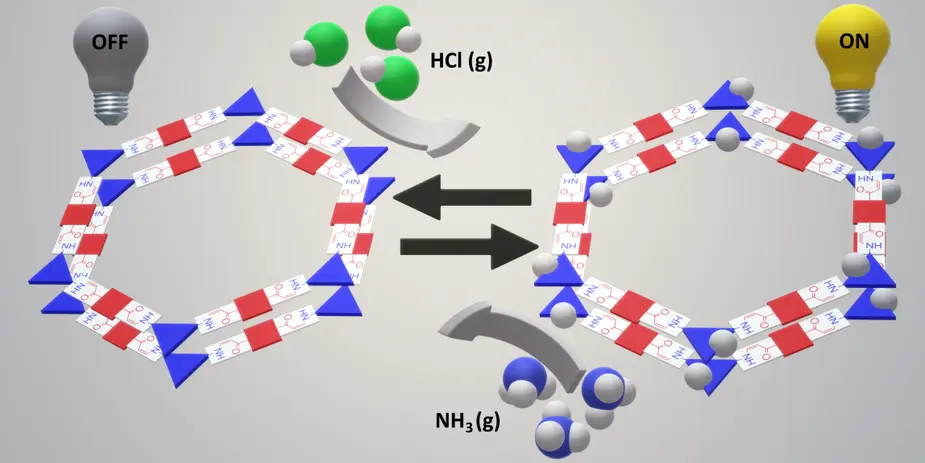More versatile materials
Article of IRIS junior research group leader Michael J. Bojdys published in Nature Communications
The IRIS junior research group leader Michael J. Bojdys and his international team have achieved a great success: Their article “Real-time optical and electronic sensing with a β-amino enone linked, triazine-containing 2D covalent organic framework” has been selected to be published in the renowned journal Nature Communications.
Bojdys article deals with aromatic two-dimensional covalent organic frameworks (2D COFs), which are a class of porous polymers that allow the precise incorporation of organic units into periodic structures.COFs can be chemically designed to incorporate particular surface functional groups which can be exploited to tune the optical and electronic properties. However, low stability towards chemical triggers has hampered their practical implementations.
Together with a team from the Institute of Organic Chemistry and Biochemistry of the Czech Academy of Sciences (Prague, Czech Republic), IRIS junior research group leader Michael J. Bojdys and his team from Humboldt-Universität zu Berlin have explored a new design principle for COFs that makes use of strong, overall conjugation and incorporation of donor-acceptor domains. In this study a new, a highly stable chemoresistant β-amino enone linked, triazine-containing COF was used as a real-time, reversible optical and electronic sensor for volatile acids and bases. The team was further able to conclude that the sensing capabilities of the COF was achieved by preferential protonation of the electron accepotor – a triazine ring in the structure – , resulting in an optical response visible to the naked eye and an increase of bulk electrical conductivity by two orders of magnitude. These findings demonstrate a powerful approach to design more practical sensors and switches, and take genuine advantage of the chemoresistant make-up, porous structure, and overall conjugation of fully-aromatic systems.
IRIS Adlershof would like to congratulate Michael J. Bojdys and his team on this successful study and its publication in Nature Communications!
Due to his great enthusiasm for the concept of IRIS Adlershof and the research carried out here, ERC-grant holder Bojdys joined the Humboldt-Universität zu Berlin and IRIS Adlershof in 2018 as leader of the junior research group “Functional Materials”. The group’s research aims at the development of metal-free, electronic components for transistors and sensors on the basis of functional materials made up of light, covalently-bonded atoms. At the heart of the project lies the challenge to transfer the control mechanisms and modularity known from molecular, organic chemistry to macroscopic structures.
Publication
Real-time optical and electronic sensing with a β-amino enone linked, triazine-containing 2D covalent organic framework.
Ranjit Kulkarni, Yu Noda, Deepak Kumar Barange, Yaroslav S. Kochergin, Pengbo Lyu, Barbora Balcarova, Petr Nachtigall, and Michael J. Bojdys
Nat Commun. Accepted Article. rdcu.be/bKW0a DOI: 10.1038/s41467-019-11264-z
Further information: www.iris-adlershof.de/en/Highlights.html
Contact
Dr. Michael J. Bojdys
Head of the Functional Nanomaterials Group
Department of Chemistry
Humboldt-Universität zu Berlin
Tel.: +49 30 2093-7383
m.j.bojdys.02(at)cantab.net
bojdyslab.org
